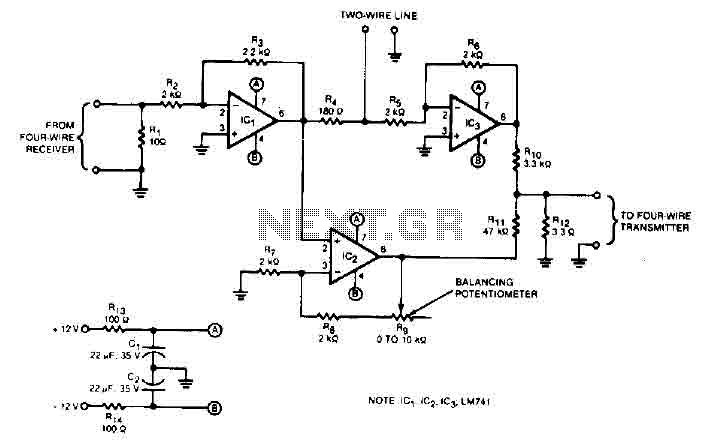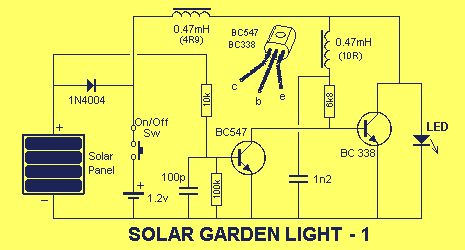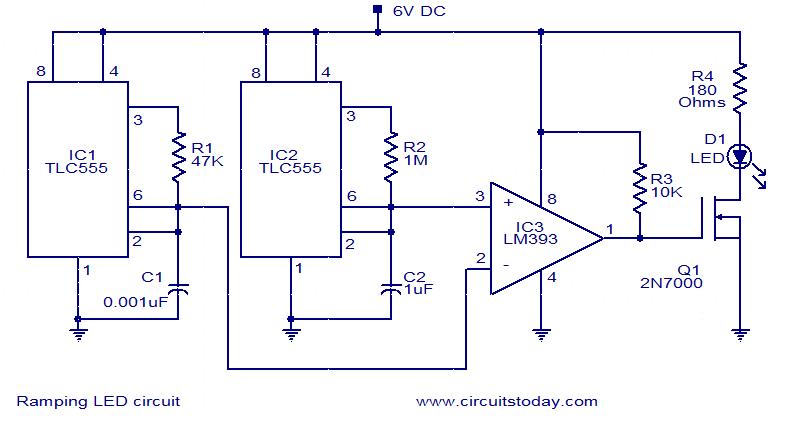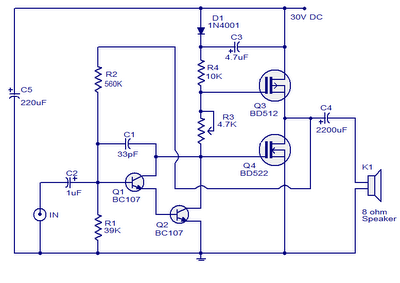
LED Audio Power Indicator
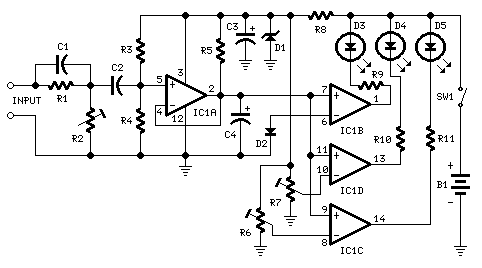
This circuit is intended to indicate the power output level of any audio amplifier. It is simple, portable, and displays three power levels that can be set to any desired value. IC1A is the input buffer, feeding 3 voltage comparators and LEDs drivers by means of a variable dc voltage obtained by R5 and C4 smoothing action. The simplest way to connect this circuit to the amplifier output is to use a twisted pair cable terminated with two insulated crocodile clips. Setup is best accomplished with an oscilloscope or an audio millivoltmeter like the one described in these pages. A 1KHz sine wave generator with variable output is also required.
This audio power level indicator circuit is designed to provide a visual representation of the output power levels from an audio amplifier. The circuit utilizes a standard operational amplifier (IC1A) configured as an input buffer to ensure that the input impedance is high enough to avoid loading the amplifier output. The buffered signal is then fed into three voltage comparators, which compare the buffered audio signal to predetermined reference voltage levels set by a voltage divider network.
The output of each comparator is connected to an LED driver, which illuminates corresponding LEDs to indicate the power output level. The reference voltages can be adjusted to accommodate different amplifier outputs, allowing for flexibility in monitoring various audio devices. The smoothing action provided by resistor R5 and capacitor C4 ensures that the signal is stable and free from noise, enhancing the accuracy of the readings.
For optimal setup and calibration, an oscilloscope or an audio millivoltmeter is recommended to measure the output of the amplifier accurately. This allows for precise adjustment of the reference levels to ensure that the LED indicators accurately reflect the power levels being output by the amplifier. Additionally, a 1KHz sine wave generator with variable output is necessary for testing purposes, enabling the user to simulate various audio signals and observe the corresponding LED responses.
The circuit can be easily connected to the amplifier's output using a twisted pair cable, which helps to minimize interference and maintain signal integrity. The use of insulated crocodile clips for connection ensures safety and ease of use during setup. Overall, this circuit is a practical solution for audio engineers and enthusiasts seeking to monitor amplifier performance in real-time.This circuit is intended to indicate the power output level of any audio amplifier. It is simple, portable, and displays three power levels that can be set to any desired value. IC1A is the input buffer, feeding 3 voltage comparators and LEDs drivers by means of a variable dc voltage obtained by R5 and C4 smoothing action. The simplest way to connect this circuit to the amplifier output is to use a twisted pair cable terminated with two insulated crocodile clips.
Setup is best accomplished with an oscilloscope or an audio millivoltmeter like the one described in these pages. Precision Audio Millivoltmeter A 1KHz sine wave generator with variable output is also required (see a suitable circuit in this website als
🔗 External reference
This audio power level indicator circuit is designed to provide a visual representation of the output power levels from an audio amplifier. The circuit utilizes a standard operational amplifier (IC1A) configured as an input buffer to ensure that the input impedance is high enough to avoid loading the amplifier output. The buffered signal is then fed into three voltage comparators, which compare the buffered audio signal to predetermined reference voltage levels set by a voltage divider network.
The output of each comparator is connected to an LED driver, which illuminates corresponding LEDs to indicate the power output level. The reference voltages can be adjusted to accommodate different amplifier outputs, allowing for flexibility in monitoring various audio devices. The smoothing action provided by resistor R5 and capacitor C4 ensures that the signal is stable and free from noise, enhancing the accuracy of the readings.
For optimal setup and calibration, an oscilloscope or an audio millivoltmeter is recommended to measure the output of the amplifier accurately. This allows for precise adjustment of the reference levels to ensure that the LED indicators accurately reflect the power levels being output by the amplifier. Additionally, a 1KHz sine wave generator with variable output is necessary for testing purposes, enabling the user to simulate various audio signals and observe the corresponding LED responses.
The circuit can be easily connected to the amplifier's output using a twisted pair cable, which helps to minimize interference and maintain signal integrity. The use of insulated crocodile clips for connection ensures safety and ease of use during setup. Overall, this circuit is a practical solution for audio engineers and enthusiasts seeking to monitor amplifier performance in real-time.This circuit is intended to indicate the power output level of any audio amplifier. It is simple, portable, and displays three power levels that can be set to any desired value. IC1A is the input buffer, feeding 3 voltage comparators and LEDs drivers by means of a variable dc voltage obtained by R5 and C4 smoothing action. The simplest way to connect this circuit to the amplifier output is to use a twisted pair cable terminated with two insulated crocodile clips.
Setup is best accomplished with an oscilloscope or an audio millivoltmeter like the one described in these pages. Precision Audio Millivoltmeter A 1KHz sine wave generator with variable output is also required (see a suitable circuit in this website als
🔗 External reference
